

Are you looking for the best kindergarten writer’s workshop tips? That’s exactly what you are going to find!
It’s the first day of kindergarten writer’s workshop and your little writers are staring at a blank page.
“I can’t write.”
“I don’t know how to draw a frog.”
“I’m hungry.”
Fast-forward to May.
“I’m not done, though!”
“Can I have some more paper?”
“I’d rather write than go to PE.”
Your writer’s workshop block of time will grow from a caterpillar to a butterfly throughout the year! The biggest changes tend to be how the students write, what type of writing pieces they complete, and growth in the ability for students to self-check their writing.
As the year progresses, writer’s workshop should look different from the beginning to the end. Check out these five kindergarten writer’s workshop tips to help you push and engage your young authors all year long.
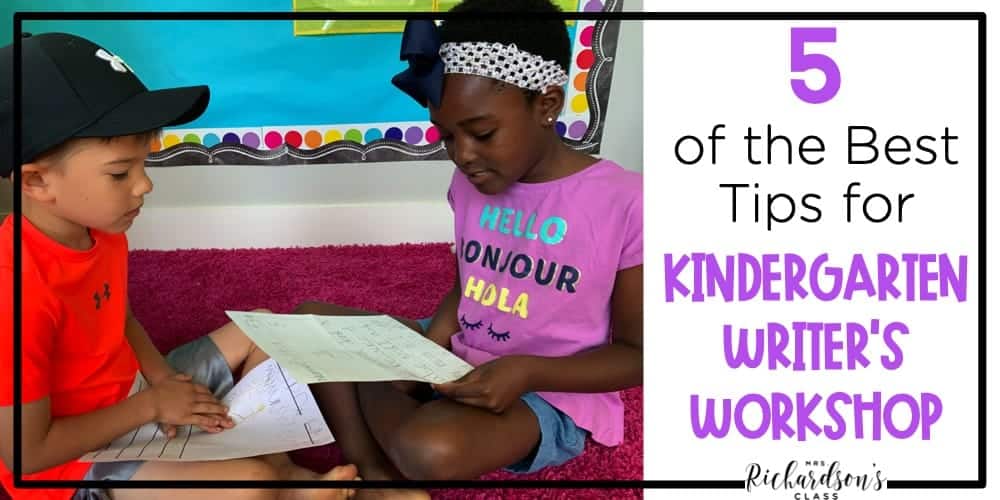
In the beginning of the year, we only start with one new page of writing per day. An easy way to manage this is to staple plain (or partially-lined) paper into a manila file folder or in a large piece of construction paper.
You can use a paper clip as a bookmark so your little authors always know where to begin writing. Students can also go back and add to a previous page if they want.

As the year progressed, I would give them more choices.
Remember!
Before students use a new type of paper or booklet, be sure to thoroughly introduce it and model how to use it. Your students are sure to be successful when they try new ways after seeing a great model!
Another great way to keep your students engaged is to change up writing utensils.
Starting with pencils is great, but you’ll start to see lots of creativity emerge when you let your students try writing with different utensils.


Remember!
Anytime you introduce a new utensil, include a mini-lesson!
You will prevent a writing utensil frenzy if you do the mini-lesson first!
While kindergarten writing is mostly personal narratives, don’t be afraid to branch out. Usually, sometime around Christmas, students are ready to try new genres like how-to writing and informative pieces.
More advanced writers might be ready to try out fiction and opinion pieces. Students have probably been exposed to many read alouds in the non-fiction area, and you might have done some interactive and/or shared how to writings.
It’s so fun to see what happens when you stretch young writers and see what they can do!
In the beginning of the year, my little writer’s LOVED doing both an “author’s chair” and partner sharing.
In the author’s chair, two to three students per day would come up and share their writing. I would share what I liked about the writing and what they did well.
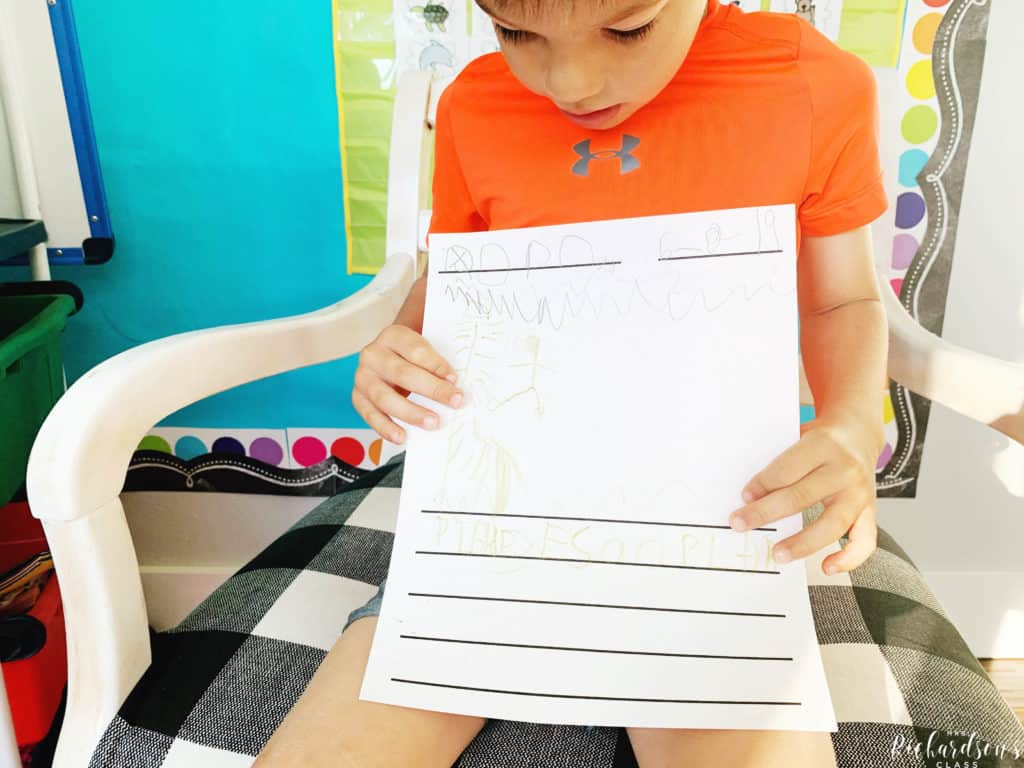
For partner sharing, students would take turns sharing what they wrote that day with their partner. It’s super easy and doesn’t take up time.
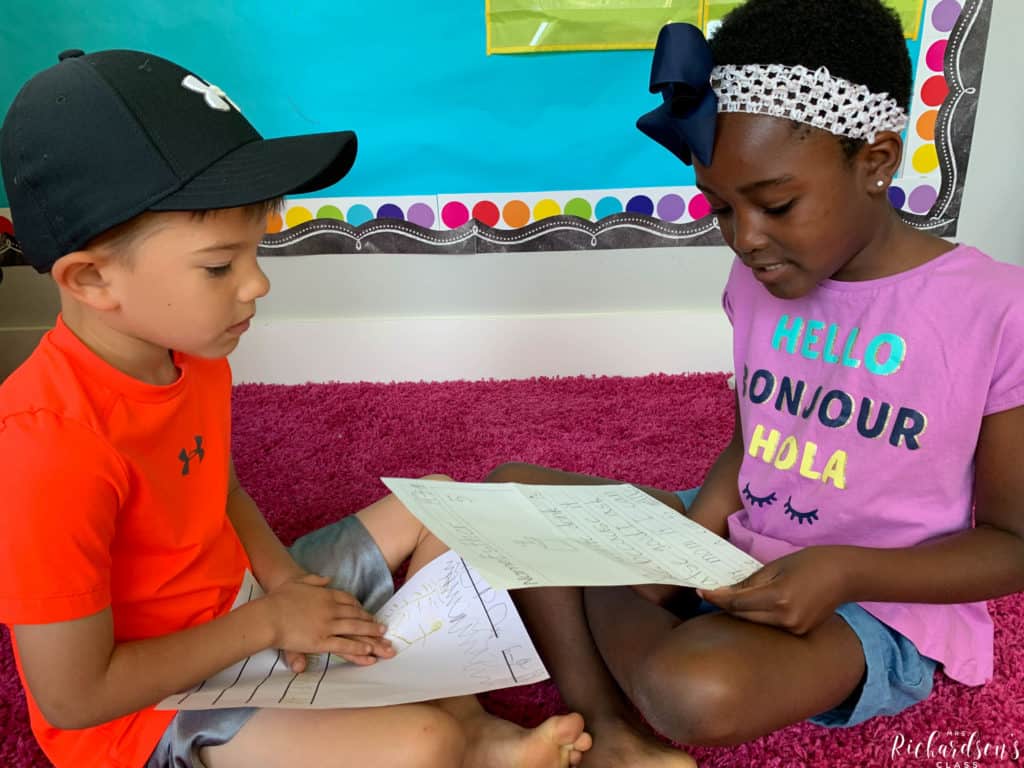
As we move through writer’s workshop during the year, students seem to understand sharing etiquette and know what to look for in writing. This is when you can starting expanding sharing time.
One great way to do this is to have students peer-review each other.
I loved doing what some people call “two stars and a wish.”
In the beginning of the year, you are focusing on the mechanics of writer’s workshop and how to begin getting ideas down on paper in the form of illustrations, pre-writing, and some writing.
Don’t forget to start stretching your writers by modeling new things during mini-lessons. They can start watching you do it, even if they aren’t quite ready to do certain new things just yet. Exposure can go a long way!
Writer’s workshop will change throughout the year.
It should!
Your students’ needs and abilities will vary through the year, so writing will naturally change, too. However, the structure of writer’s workshop should consistently be the same.
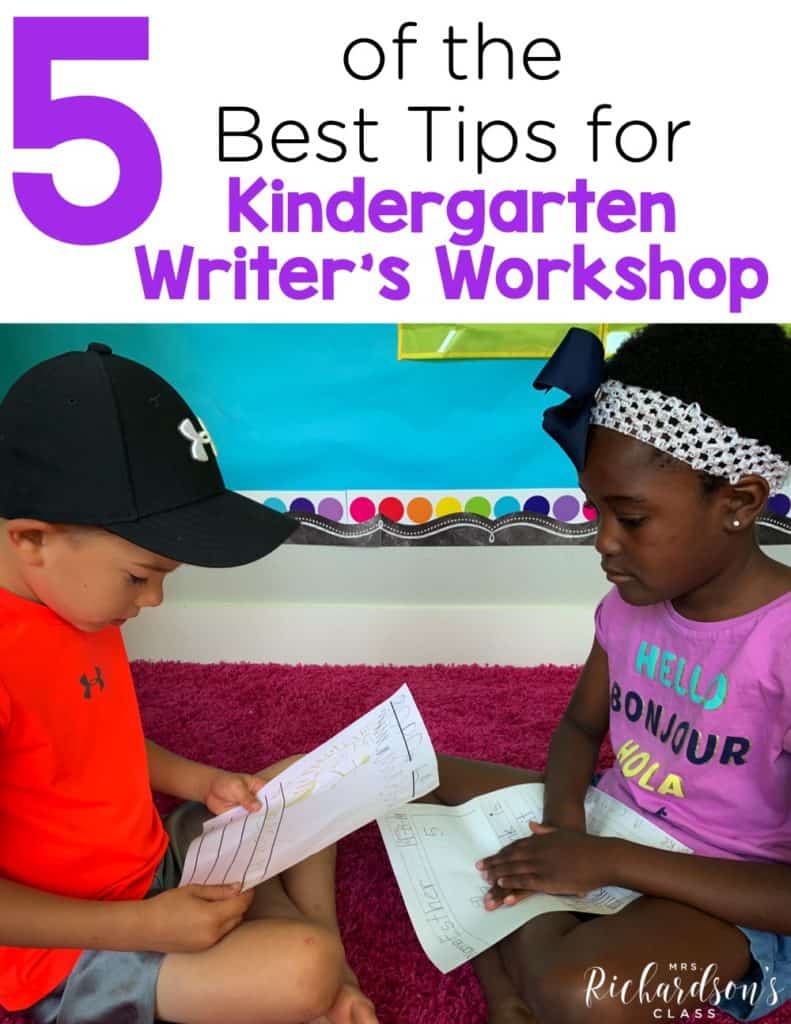
Are you looking for some other helpful writing blog posts? If you’re not sure where to start with writer’s workshop, check out THIS post where I share piece in detail. HERE I shared what the conferences should look like in writer’s workshop. This is the heart of it all and a great place to start!
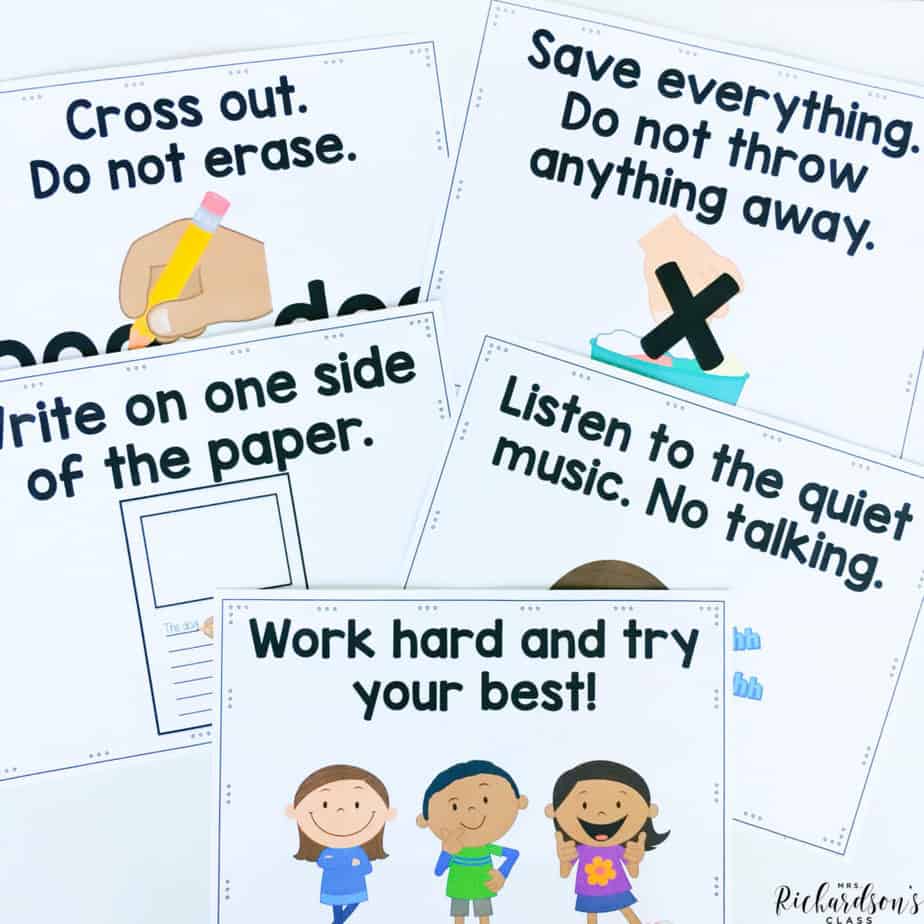

I’m a K-1 teacher who is passionate about making lessons your students love and that are easy to implement for teachers. Helping teachers like you navigate their way through their literacy block brings me great joy. I am a lifelong learner who loves staying on top of current literacy learning and practices. Here, you’ll find the tools you need to move your K-2 students forward!


| Cookie | Duration | Description |
|---|---|---|
| cookielawinfo-checkbox-analytics | 11 months | This cookie is set by GDPR Cookie Consent plugin. The cookie is used to store the user consent for the cookies in the category "Analytics". |
| cookielawinfo-checkbox-functional | 11 months | The cookie is set by GDPR cookie consent to record the user consent for the cookies in the category "Functional". |
| cookielawinfo-checkbox-necessary | 11 months | This cookie is set by GDPR Cookie Consent plugin. The cookies is used to store the user consent for the cookies in the category "Necessary". |
| cookielawinfo-checkbox-others | 11 months | This cookie is set by GDPR Cookie Consent plugin. The cookie is used to store the user consent for the cookies in the category "Other. |
| cookielawinfo-checkbox-performance | 11 months | This cookie is set by GDPR Cookie Consent plugin. The cookie is used to store the user consent for the cookies in the category "Performance". |
| viewed_cookie_policy | 11 months | The cookie is set by the GDPR Cookie Consent plugin and is used to store whether or not user has consented to the use of cookies. It does not store any personal data. |
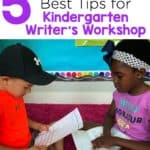
One Response
Thank you